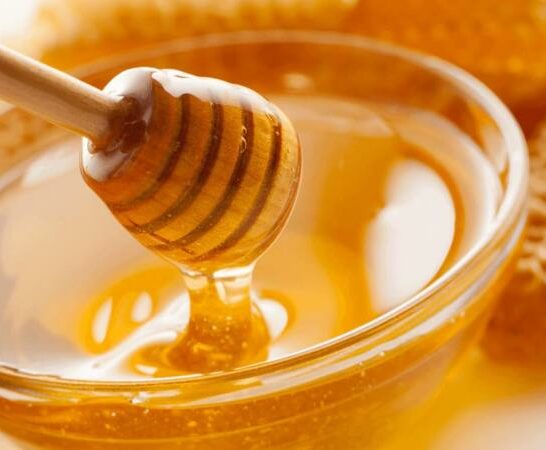Honey is a very sweet substance that is made by beautiful bees that comes from flowers.
There are over 320 different types of honey that vary in flavor and color.
Honey is mainly made up of sugar with a few minerals and vitamins like zinc, iron, and antioxidants.
Honey is used as a natural sweetener, antibacterial agent, anti-inflammatory, and antioxidant.
Honey can be used topically for wound healing or burns and used orally to aid in soothing coughs and sore throats.
One thing we forget to take into consideration about this wonderful substance is the type of food group that honey actually belongs to.
What Food Group Is Honey?
Honey belongs to sweetener and sugar in the UK, Europe, New Zealand, Australia, Canada, and across the USA. As honey is labeled a sugar, it is also included in the group of carbohydrates.
What Is A Food Group
A food group is basically a category of foods that have the same biological classifications or similar nutritional properties.
The nutrition guides will often put foods into food groups.
They are then set into a recommended dietary allowance that supplies the daily servings of each individual group to aim for a healthy diet.
What Are The Basic Food Groups?
Rice, noodles, grains, bread, and cereals
Vegetables and legumes
Milk, yogurt, cheese
Fruit
Fish, poultry, nuts, eggs, legumes, and lean meat
A balanced diet needs to include each of the categories for both nutrients and to offer a range of textures and different tastes.
What Exactly Is Honey?
Honey is produced by bees and is collected from the nectar of the flowers.
Once collected, it is then stored inside the beehive for eating during scarce times.
The very sugary nectar is extracted by the tube-shaped tongue of the bee and stored in the bee’s extra stomach.
As the nectar is swishing around in the stomach, it creates enzymes that can transform the chemical composition, which makes it able to be stored long term.
The bee goes back to the hive and then transfers the honey to a different bee via the mouth.
This process will be repeated until the half-digested nectar is stored inside the honeycomb.
Once it is sitting in the honeycomb, it is still a watery mess and looks nothing like the honey we spread on our toast.
The water needs to be taken out of the honey, which is done via the bees fanning the liquid with their wings to aid in evaporation.
When the water has evaporated, the bees will seal the honeycomb off with liquid from their abdomen, which is what we refer to as beeswax.
Honey can be stored in the honeycomb indefinite if it isn’t exposed to water and air.
Does Honey Have Nutritional Components?
Did you know that over 80% of honey is actually made up of carbohydrates? Most of that is just different sugars.
Maltose, glucose, sucrose and fructose. It also contains many important amino acids.
There are trace amounts of vitamin C and B vitamins with minerals such as phosphorus, selenium, and magnesium.
The amount of these will differ depending on the type of honey and the main sources of the nectar.
What Food Group Does The FDA Put Honey In?
According to the FDA, they put honey in the nutritive sweetener category.
The nutritive sweeteners are referred to also as caloric sugars that provide the body with energy in the form of carbohydrates.
Some of these sugars are found in food naturally, such as fructose.
This is found in fresh fruit that your body gets when you consume fructose.
Fructose supplies the body with vitamins, fiber, minerals, and phytonutrients that you cannot gain from normal sugar.
How Is Honey Good For The Body?
Research has been carried out on how honey can benefit your body, such as the following:
The antioxidants that are found in honey can be associated with helping to lower your risk of heart disease.
For troubled coughs, studies have shown that Labiatae honey and citrus honey can work well to stop coughing and help with upper respiratory infections.
The topical use of honey that is of medical grade can promote wound healing and be beneficial to small burns.
Studies have suggested that honey can offer anti-anxiety benefits and aid in memory disorders.
Honey can help to relieve gastrointestinal tract problems such as upset stomach and diarrhea.
Honey is also good for oral rehydration therapy.
When using for other methods than eating, you need to buy medicinal honey, also known as manuka honey.
Conclusion
Honey is classed as sugar and a sweetener. These are on the top of the food group chart and should be eaten in moderation.
The raw or medicinal types of honey are better for you and can offer many health benefits along with a smooth and beautiful taste.
It is a good idea to read the labels to ensure you are choosing a healthy honey choice.
Frequently Asked Questions About Honey
Is Honey In The Food Pyramid?
Honey isn’t included specifically on the food pyramid. However, it goes with fats and sugars at the top, which is recommended to be used sparingly.
Does Honey Expire?
Honey doesn’t actually expire if kept in a sealed container. It will, however, darken and lose some of the flavors and aroma. It will eventually crystallize. When this happens, the honey is still safe to eat.

